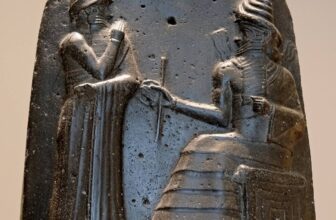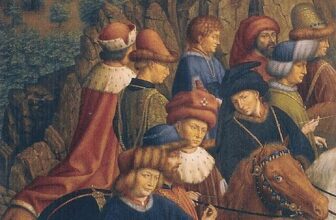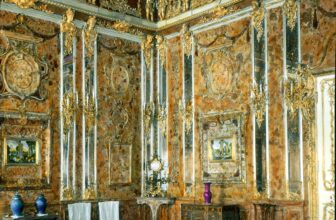The Story of Francisco Goya’s Exile, Madness, and Masterpieces
In the dim corridors of European art history, few names echo with the paradox of brilliance and torment as resoundingly as that of Francisco José de Goya y Lucientes, known to the world simply as Goya. His life was a canvas of contradictions: celebrated and censured, lauded in court and loathed in exile, hailed as the last of the Old Masters and the first of the moderns. But what led this genius of brush and shadow to be exiled from his native Spain? What demons haunted his mind and spilled into his art? And what happened during the pivotal year of 1792 that forever changed his life?
Let’s step back in time and follow the winding path of Goya’s life, where the answers lie, half in shadow, half in light.
The Rise of a Spanish Master
Born on March 30, 1746, in the small Aragonese town of Fuendetodos, Goya was the son of a gilder. His family moved to Zaragoza when he was still a child, and it was there that his artistic inclinations began to surface. Under the apprenticeship of José Luzán, a respected local painter, Goya learned the foundations of art. However, his rebellious nature was already apparent. Dissatisfied with strict traditional methods, he soon sought more, traveling to Madrid and later to Italy to hone his craft.
By the 1770s, Goya was establishing himself as a tapestry designer for the Royal Tapestry Factory, creating idyllic scenes of Spanish life that were vibrant and full of movement. These works, while decorative, hinted at his talent for capturing human nature with empathy and subtle satire.
In 1786, Goya’s career took a dramatic leap when he was appointed pintor del rey, Painter to the King. His portraiture, bold and brutally honest, stood apart from the more flattering styles of the time. Nobles and royals both sought him and feared him, for Goya painted what he saw, not just what was desired. But even as he ascended the social and artistic ranks, fate had darker colors to add to his life’s palette
1792: The Year That Changed Everything
In 1792, while traveling in Andalusia, Goya was struck by a mysterious illness, an event that would change the course of his life and his art. The exact nature of the illness remains debated by historians and physicians alike. Some suggest it may have been lead poisoning from his paints, others propose viral encephalitis or Ménière’s disease. Whatever the cause, the aftermath was clear and devastating: Goya was left permanently deaf.
For a man whose life thrived on social interactions, court gatherings, artistic debates, public exhibitions, this silence was a descent into isolation. And from that silence emerged a new Goya: darker, more introspective, less concerned with flattery and more obsessed with truth.
This period of personal crisis ushered in a transformation of his artistic style. His works became more expressive, raw, and often grotesque. He began producing etchings and drawings that explored human suffering, superstition, war, and madness. The seeds of modernism were taking root in the soil of his despair.
The Madness Within: Goya’s Mental Illness
The deafness wasn’t Goya’s only affliction. Along with physical ailments came psychological torment. Goya exhibited signs of mental illness, possibly depression, anxiety, or what today might be classified as bipolar disorder. His late works, especially the haunting series known as the Black Paintings, provide a vivid window into his disturbed mind.
Painted directly onto the walls of his home in the 1810s and 1820s, the Black Paintings are a descent into the subconscious. There is no trace of the courtly elegance or rustic charm of his earlier works. Instead, these paintings teem with grotesque figures, expressions of terror, cannibalism, despair, and existential dread. Among them is the infamous Saturn Devouring His Son, a mythological scene turned horrific, a god consumed by paranoia and madness.
While there’s no definitive diagnosis of Goya’s mental illness, his symptoms, episodes of intense paranoia, hallucinations, disorientation, and deep melancholia, point to severe psychological distress. His writings, too, speak of confusion and fear. It’s possible that the trauma of war, political upheaval, deafness, and illness created a perfect storm for a mental breakdown.
Yet from this darkness came innovation. Goya’s suffering informed his artistry in profound ways, paving the path for later artists like Picasso, Dalí, and Francis Bacon.
Why Is He Called “Goya”?
The name “Goya” is simply a shortened form of his full name, Francisco José de Goya y Lucientes. In traditional Spanish naming customs, “Goya” comes from his father’s surname, while “Lucientes” comes from his mother. As he became more prominent, the name “Goya” alone came to be synonymous with artistic genius and radical vision. Much like “Picasso” or “Velázquez,” “Goya” evolved from a surname into an icon.
But within Spain, the name carries weight beyond art. Goya is a symbol of Spain’s tortured soul, its beauty, brutality, resilience, and contradictions. His works portray not just individual subjects, but the psyche of an entire nation grappling with identity, war, faith, and modernity.
Painting the Power: Goya and the Royal Family
Yes, Goya painted the Spanish royal family, perhaps more famously, or infamously, than any artist before or since.
In 1800, he completed Charles IV of Spain and His Family, a monumental portrait of King Charles IV, Queen María Luisa, and their children. At first glance, it might seem like a typical royal portrait, grand, ornate, and noble. But look closer, and the subtle satire emerges.
The royal figures are painted with brutal honesty. The King appears almost clueless, the Queen domineering, their children aloof or awkward. It’s been compared to a painted political cartoon masquerading as state propaganda. Goya even places himself in the background, brush in hand, standing in the shadows, a subtle nod to Velázquez’s Las Meninas, and a sly commentary on the role of the artist in society.
Far from a mere court flatterer, Goya used portraiture as critique. He painted ministers, nobles, and generals, not as paragons, but as flawed individuals. He understood power, its allure and its corruption, and captured it in oil with uncanny precision.
This honesty made him both revered and feared at court.
Exile: Goya’s Final Years Away from Home
Despite his connections to the Spanish monarchy, Goya’s political views leaned liberal, even revolutionary. He supported constitutional reform and was sympathetic to Enlightenment ideals. During the Napoleonic invasion and the brutal Peninsular War that followed, Goya stayed in Spain and documented the atrocities committed by both French and Spanish forces in his graphic series The Disasters of War.
When the restored Bourbon monarchy under King Ferdinand VII began a campaign of repression in the 1810s, targeting liberals, intellectuals, and reformists, Goya found himself increasingly marginalized. His political affiliations, combined with the disturbing themes of his late work, made him a suspect figure.
In 1824, at the age of 78, Goya chose voluntary exile. He moved to Bordeaux, France, a haven for Spanish liberals at the time. Though he remained somewhat active artistically, his health declined. He painted smaller works, did some lithography, and maintained correspondence with friends back in Spain.
But the fire that had once burned so fiercely in his art had dimmed. He was tired. On April 16, 1828, Goya died in Bordeaux at the age of 82.
His body was buried in France, but in a strange postscript to his life, his remains were exhumed in 1901 for reburial in Madrid, except his head was missing. To this day, no one knows what happened to Goya’s skull. A fitting final mystery for a man so enshrouded in shadow.
The Echoes of Goya
Today, Francisco Goya stands as one of the most influential painters in Western art history. His works span genres, portraits, social commentary, religious scenes, mythology, and the grotesque. He painted everything from courtly elegance to demonic nightmares.
He was a chronicler of war, a critic of power, a visionary of the human psyche. He bridged the gap between the classical and the modern, influencing the Romantics, the Expressionists, the Surrealists, and beyond.
But perhaps his greatest legacy lies not in any one painting, but in the way he laid bare the truth, about people, about society, about himself. In a time of flattery and conformity, Goya dared to show the darkness. And in doing so, he gave future generations permission to do the same.
The Man Behind the Shadows
Why was Goya exiled? Because truth, when painted with honesty, becomes dangerous.
What illness plagued him? A tangled web of deafness, depression, and possible neurological decline.
What happened in 1792? A brush with death, a loss of hearing, and the birth of his darker self.
Why is he called Goya? Because the name became legend.
Did he paint the royal family? Yes, and perhaps with more truth than they would have liked.
Francisco Goya was not just a painter. He was a witness, a prophet, a mirror, and a madman. His story is a testament to the power of art to reflect the soul of an era, and the soul of a man. image/wikipedia




